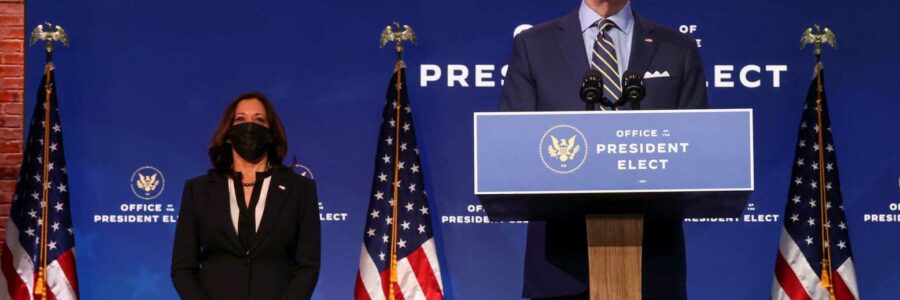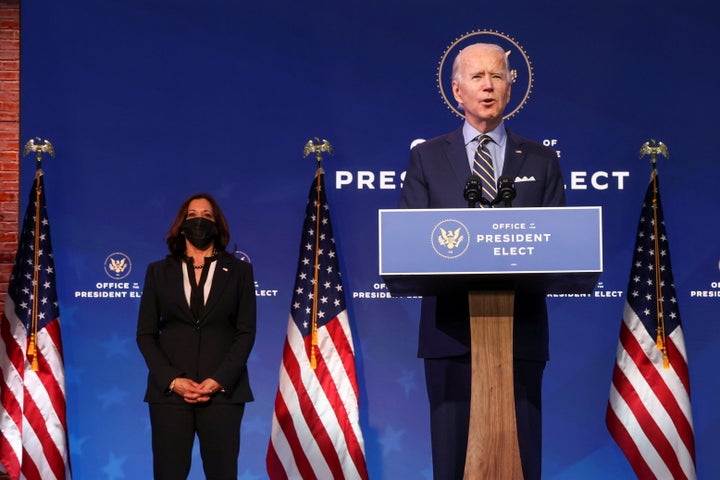
Joe Biden’s Stimulus Plan Emphasizes School Reopenings
President-elect Joe Biden has said he would like to see most K-8 schools open in person within 100 days of taking office, and now he is asking Congress for hundreds of billions of dollars to help him achieve this goal.
On Thursday, Biden unveiled his proposed COVID-19 stimulus package, which asks for $1.9 trillion to help rebuild the nation’s economy, manage the coronavirus and support struggling communities. Schools and education constitute a major part of the plan, which proposes funding a massive system for regularly testing teachers and students for COVID-19 and getting them back to in-person school as soon as possible.
If passed, the amount of relief provided to students and schools in this package would dwarf what Congress had previously provided to the education sector in previous packages, which school leaders said was wholly inadequate. The plan asks for $50 billion to invest in an enormous expansion of the COVID-19 testing infrastructure. It is also asking for $170 billion to help schools safely reopen, helping them fund measures like improving classroom air ventilation and buying personal protective equipment.
In remarks on the proposal, Biden said he believed his school reopening goal is possible, “if we give school districts, communities and states the clear guidance they need, as well as the resources they will need that they can not afford right now because of the economic crisis we are in. That means more testing and transportation, additional cleaning and sanitizing services, protective equipment and ventilation systems in the schools.”
The ask far overshadows the amount of money Congress has previously provided for schools in the last two COVID-19 stimulus packages. The package passed in December provided $82 billion for education, a far cry from what the future Biden administration is now proposing. The first COVID-19 stimulus package provided only $30 billion for education purposes.
Education advocates and school leaders have said for almost a year that they need an urgent injection of funds to support students and reopen schools. In the last package, K-12 public schools specifically received around $54 billion. Education leaders had been asking for about three times that.
Education leaders have been quick to applaud this latest proposal.
“No one wants to return to in-person learning more than the educators who dedicate their lives to helping their students succeed,” said a statement from Becky Pringle, president of the National Education Association, the country’s largest teachers union. “Educators are encouraged not only by President-elect Biden’s leadership, but also in knowing that there is finally a true partner in the White House who will listen, value the ideas, and act in the best interest of students, educators, and families.”
New research from the Center on Reinventing Public Education found that over 30% of school districts were now fully online, a number that has grown since the beginning of the school year. Biden has emphasized his desire to safely get students back in the classroom as quickly as possible.
His plan specifically calls for funds to help classrooms reopen more safely ― like funding for increased school nurses ― but also money to help children catch up academically and deal with some of the social-emotional impacts of COVID-19. It asks for funding for counselors, summer school and to help beat back learning loss that may have already occurred during the pandemic. It proposes setting aside a portion of funding for a future grant program to help districts and localities deal with COVID-19-related educational challenges, and will allow schools to get reimbursed for certain expenses through Federal Emergency Management Agency disaster relief fund resources.
“These funds will also include provisions to ensure states adequately fund education and protect students in low-income communities that have been hardest hit by COVID-19,” the proposal says.
On the higher-education front, the proposal asks for $35 billion for public institutions and historically Black colleges and universities, to help provide millions of students with up to $1,700 in financial assistance. It also asks for $5 billion for governors to help them support programs and children in need of extra assistance from pre-K to higher education.
Overall, the plan also focuses on offering child care assistance for families and providers, and on lifting children out of poverty. It is only the first part of Biden’s recovery plan, called the American Rescue Plan. Next month, he plans to unveil the second part of his plan, Build Back Better Recovery Plan, he said.
“These are key elements of the American Rescue Plan that would lift 12 million Americans out of poverty and cut child poverty in half,” he said in his remarks Thursday. “That’s 5 million children lifted out of poverty.”
RELATED…
Source: Read Full Article
